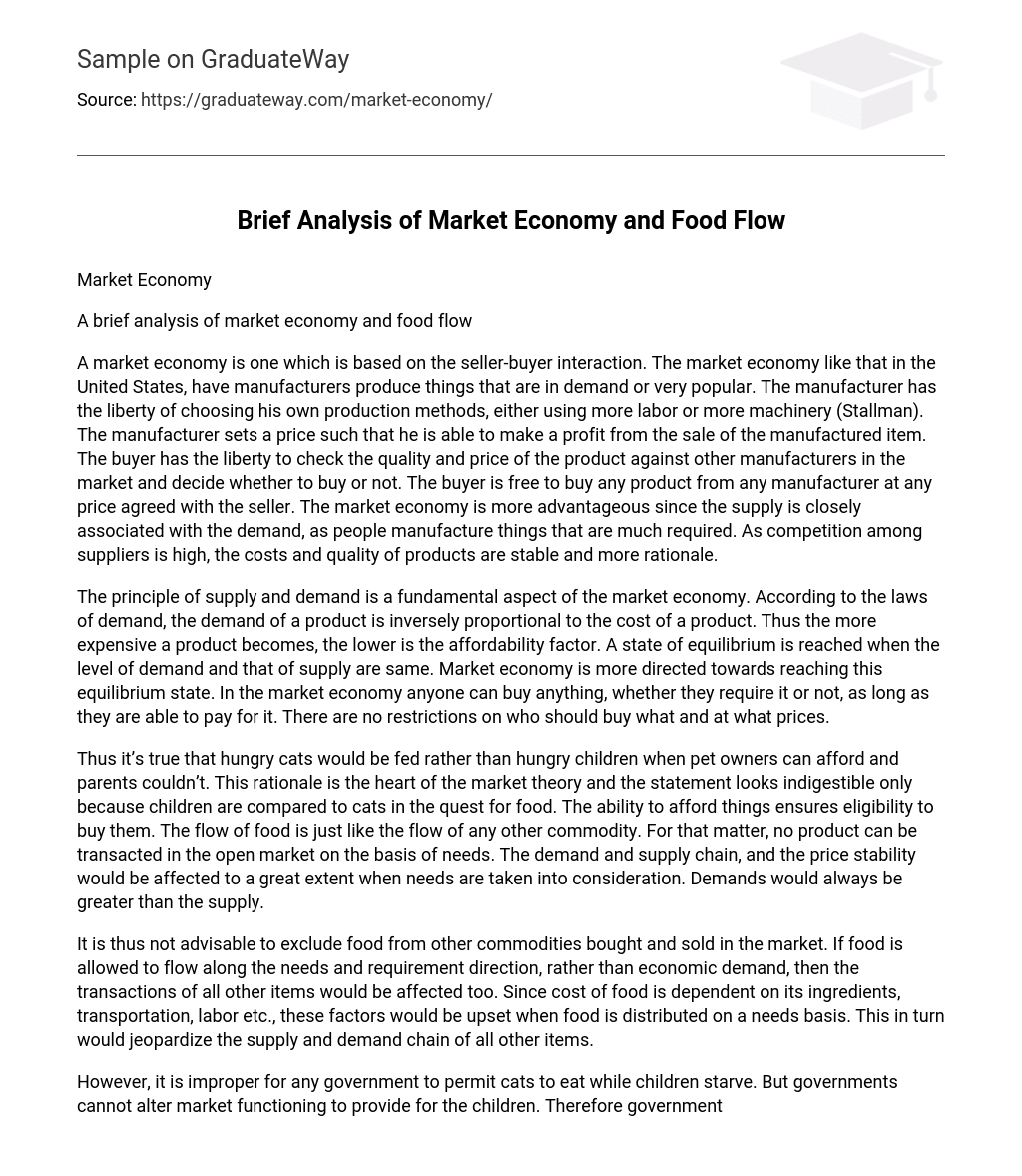Market Economy
A brief analysis of market economy and food flow
A market economy is one which is based on the seller-buyer interaction. The market economy like that in the United States, have manufacturers produce things that are in demand or very popular. The manufacturer has the liberty of choosing his own production methods, either using more labor or more machinery (Stallman). The manufacturer sets a price such that he is able to make a profit from the sale of the manufactured item. The buyer has the liberty to check the quality and price of the product against other manufacturers in the market and decide whether to buy or not. The buyer is free to buy any product from any manufacturer at any price agreed with the seller. The market economy is more advantageous since the supply is closely associated with the demand, as people manufacture things that are much required. As competition among suppliers is high, the costs and quality of products are stable and more rationale.
The principle of supply and demand is a fundamental aspect of the market economy. According to the laws of demand, the demand of a product is inversely proportional to the cost of a product. Thus the more expensive a product becomes, the lower is the affordability factor. A state of equilibrium is reached when the level of demand and that of supply are same. Market economy is more directed towards reaching this equilibrium state. In the market economy anyone can buy anything, whether they require it or not, as long as they are able to pay for it. There are no restrictions on who should buy what and at what prices.
Thus it’s true that hungry cats would be fed rather than hungry children when pet owners can afford and parents couldn’t. This rationale is the heart of the market theory and the statement looks indigestible only because children are compared to cats in the quest for food. The ability to afford things ensures eligibility to buy them. The flow of food is just like the flow of any other commodity. For that matter, no product can be transacted in the open market on the basis of needs. The demand and supply chain, and the price stability would be affected to a great extent when needs are taken into consideration. Demands would always be greater than the supply.
It is thus not advisable to exclude food from other commodities bought and sold in the market. If food is allowed to flow along the needs and requirement direction, rather than economic demand, then the transactions of all other items would be affected too. Since cost of food is dependent on its ingredients, transportation, labor etc., these factors would be upset when food is distributed on a needs basis. This in turn would jeopardize the supply and demand chain of all other items.
However, it is improper for any government to permit cats to eat while children starve. But governments cannot alter market functioning to provide for the children. Therefore governments become the custodians of the children and pays for their food. Government identifies children who cannot be fed by their parents and ensure that such children don’t go hungry. The social welfare schemes and all other benefits provided by the government are aimed at providing things to those who need them, but can’t afford. Thus the needs of people, who can’t afford, are satisfied without upsetting the functioning of the market.
REFERENCES
Stallman C., The Economic Systems [Electronic Version] Downloaded on 25th July, 2008 from http://www.buckinvestor.com/basics/economic_systems.shtml
Investopedia ULC (2008) Economics Basics: Demand and Supply [Electronic Version] Downloaded on 25th July, 2008 http://www.investopedia.com/university/economics/economics3.asp





